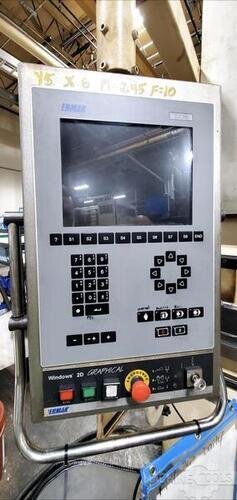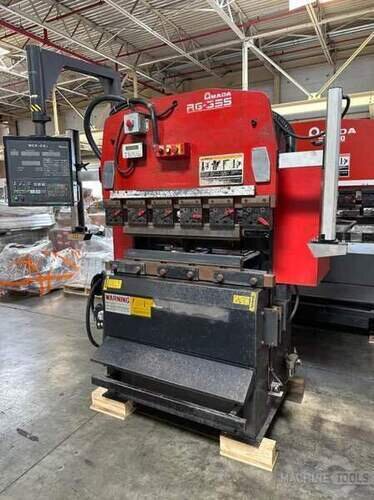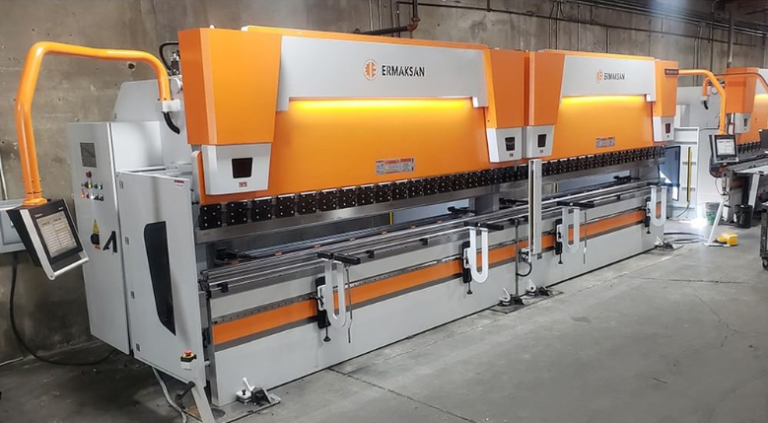I’m Dave Graf, and I’ve dedicated my career to guiding customers through the best machinery decisions to help them improve efficiency and profitability. My role as Regional Sales Executive at Mac-Tech isn’t just about offering the latest equipment; it’s about understanding your challenges and finding the right solution. Over the years, I’ve seen firsthand how proper consultation can save time, money, and stress in the fast-paced world of manufacturing.
When I first started, I quickly learned that technology by itself isn’t enough. True success comes from matching the right equipment—whether that’s a flat or tube laser, beam line robotic coping technology, or a press brake—to the unique needs of each operation. Now, my goal is to partner with you, sharing the insights I’ve gathered in beam coping, automation, and everything in between, so you can benefit from a streamlined, profitable, and future-focused workflow.
Why My Consultative Beam Coping Approach Empowers You
I’ve found that a consultative approach means focusing on your specific pain points, not just pushing the latest machinery. Whenever I meet with clients to discuss beam coping, I start by learning about your production volume, layouts, and how you currently tackle coping tasks. This way, I can offer insights that fit your reality, rather than a one-size-fits-all solution.
One of my core principles is guiding you toward incremental improvements. Even if we’re exploring large-scale technologies like robotic beam coping or advanced lasers, I’d rather show you how to embed this equipment into your workflow step by step. It’s about helping you realize immediate gains while building a long-term roadmap for success.
Another key element is trust. Through ongoing communication and genuine collaboration, I work to become a partner you can rely on for technical knowledge, service, and support. By putting your priorities first, I empower you to operate at a higher level of efficiency and productivity—and ultimately improve your bottom line.
My Insights on Manual Beam Coping and Its Pitfalls
Early in my career, I spent plenty of time around manual beam coping, and I heard from fabricators dealing with delays, inconsistencies, and sometimes even safety hazards. Manual methods often require multiple passes, extensive grinding, and rework that eats away at both time and labor costs. If your team is constantly wrestling with repeated measurements and manual adjustments, productivity and morale can take a serious hit.
I’ve advised many businesses on how to transition away from these time-consuming tasks. From ensuring precise cuts to reducing post-processing tasks, I’ve seen how investing in a more reliable system can dramatically impact scheduling, budgeting, and overall workflow. Manual coping may seem economical at first, but the long-term hidden costs can be significant.
Having stood in your shoes, I know that manual beam coping often results in production bottlenecks. I’m here to alleviate that frustration by identifying pain points and proposing solutions backed by data, case studies, and real-world experience. By focusing on sustainability and ROI, I help you see how pivoting from purely manual approaches to advanced automation can be a game-changer.
How Automation Transforms Your Beam Coping Workflow
Automation isn’t just about replacing tasks; it’s about optimizing your entire process to boost output and reduce wasted effort. I’ve worked with solutions like beam line robotic coping, which delivers highly accurate cuts without the traditional bottlenecks. That advanced precision improves both your speed and consistency, making it possible to handle higher volumes and more complex jobs.
One thing I appreciate about automated solutions is that they free your skilled operators to focus on higher-value tasks. Instead of constantly re-measuring or setting up manual cuts, they can oversee multiple projects and ensure quality throughout the shop. From flat and tube lasers to press brakes and tube bending, automation can streamline almost every facet of your operation.
That said, I always emphasize careful planning before jumping into automation. By understanding your facility’s layout, staffing, and production goals, I can develop a plan that sets you up for both immediate and long-term success. My role is to ensure that any new machinery or process optimally integrates with your existing workflow, ultimately driving profitability.
AFD Plate Drilling Machines
Collaborating for Success: My Commitment to Your Needs
When I approach a new project, I like to see it as an opportunity to build an ongoing partnership. Together, we map out your objectives, assess potential machinery solutions, and track the results over time. My personal focus is bridging technology gaps so you can focus on what you do best—delivering top-quality products to your customers.
I make it a point to stay involved after the sale. Whether it’s answering questions about machine setup or finding ways to boost efficiency, I’m only a phone call or email away. This level of commitment stems from my desire to be a long-term resource, not just a salesman. In my experience, true success in beam coping and automation comes from steady collaboration and open communication.
The ultimate goal is increasing your profitability. By optimizing equipment usage and streamlining production, you can strengthen your competitive edge. I take pride in offering solutions that fit—and by working together, we can improve your workflow, reduce downtime, and create clear pathways for growth.
FAQ Section
How long does it typically take to see ROI on a robotic coping system?
In many cases, my clients start seeing returns within the first 12 to 18 months, thanks to reduced labor costs and higher throughput.
Will I need extra staff to manage automated machinery?
Often, you can reallocate existing personnel to oversee new equipment. Better efficiency means your team can handle more tasks without expanding headcount.
What about training for advanced equipment like lasers and press brakes?
I coordinate comprehensive training programs to ensure your operators and maintenance teams feel confident, maximizing performance and minimizing downtime.
Is automation only for large-scale operations?
Not necessarily. I work with companies of different sizes to find the right level of automation that matches their production needs and budget.
How do I decide if beam line robotic coping is right for my facility?
We’ll analyze factors like job volume, part complexity, and existing equipment. My goal is to make sure any investment aligns precisely with your operational objectives.
I encourage you to reach out if you’re ready to explore how beam coping automation can elevate your shop’s capabilities. My commitment is to walk you through every step, from evaluating your current setup to planning and implementing the perfect solution. I look forward to helping you stay ahead in a rapidly evolving industry.
Get Weekly Mac-Tech News & Updates








